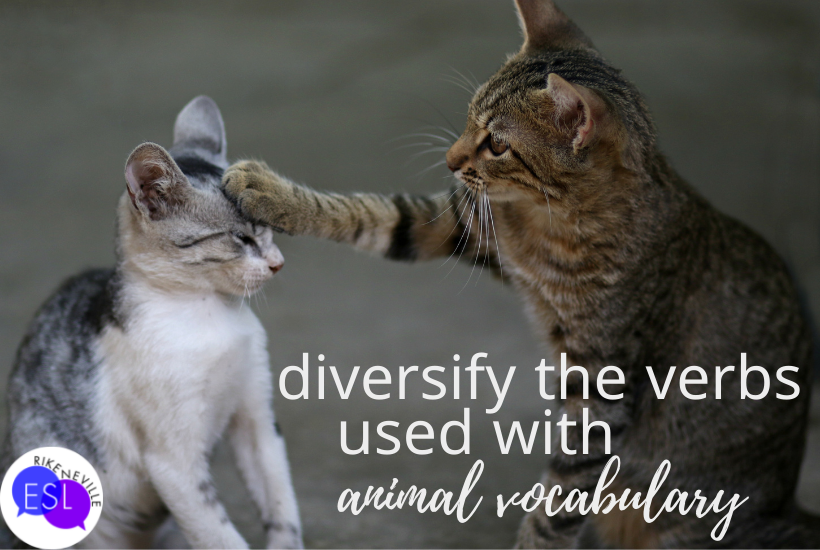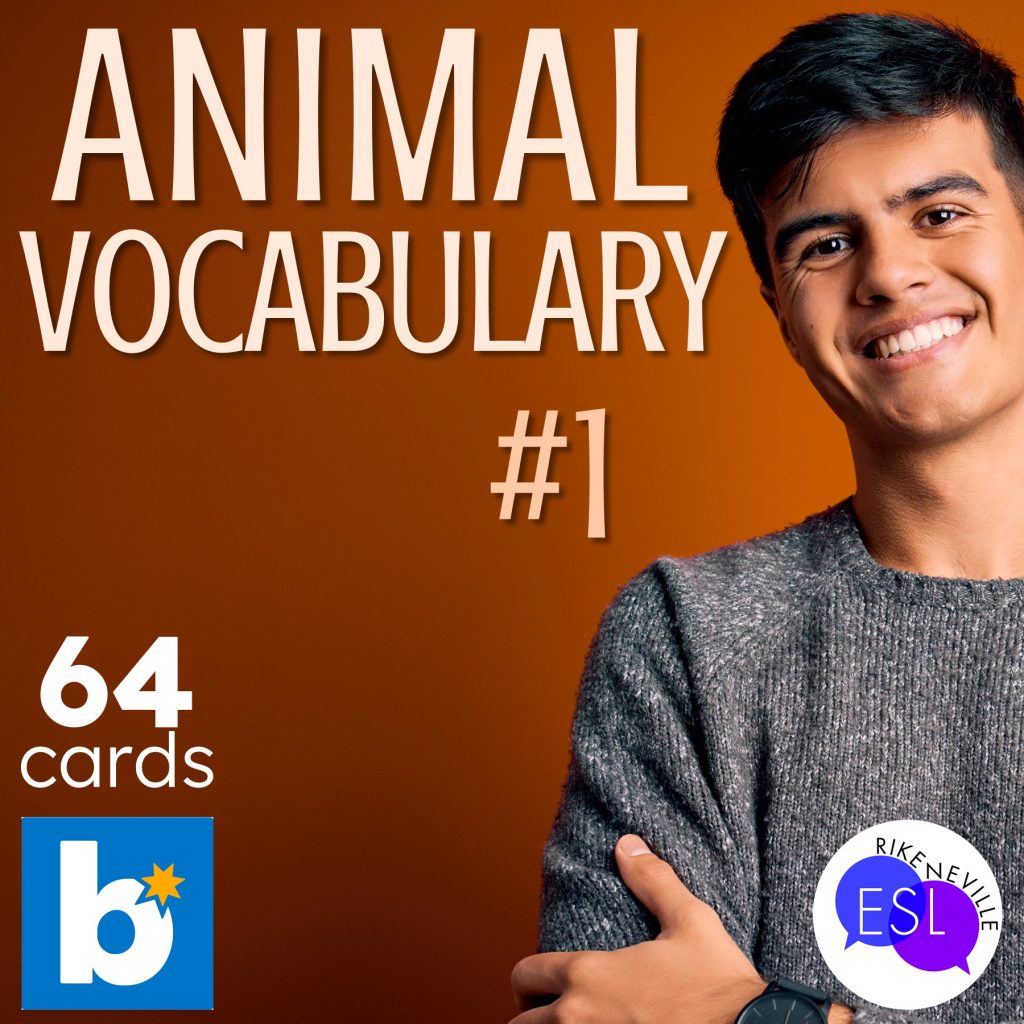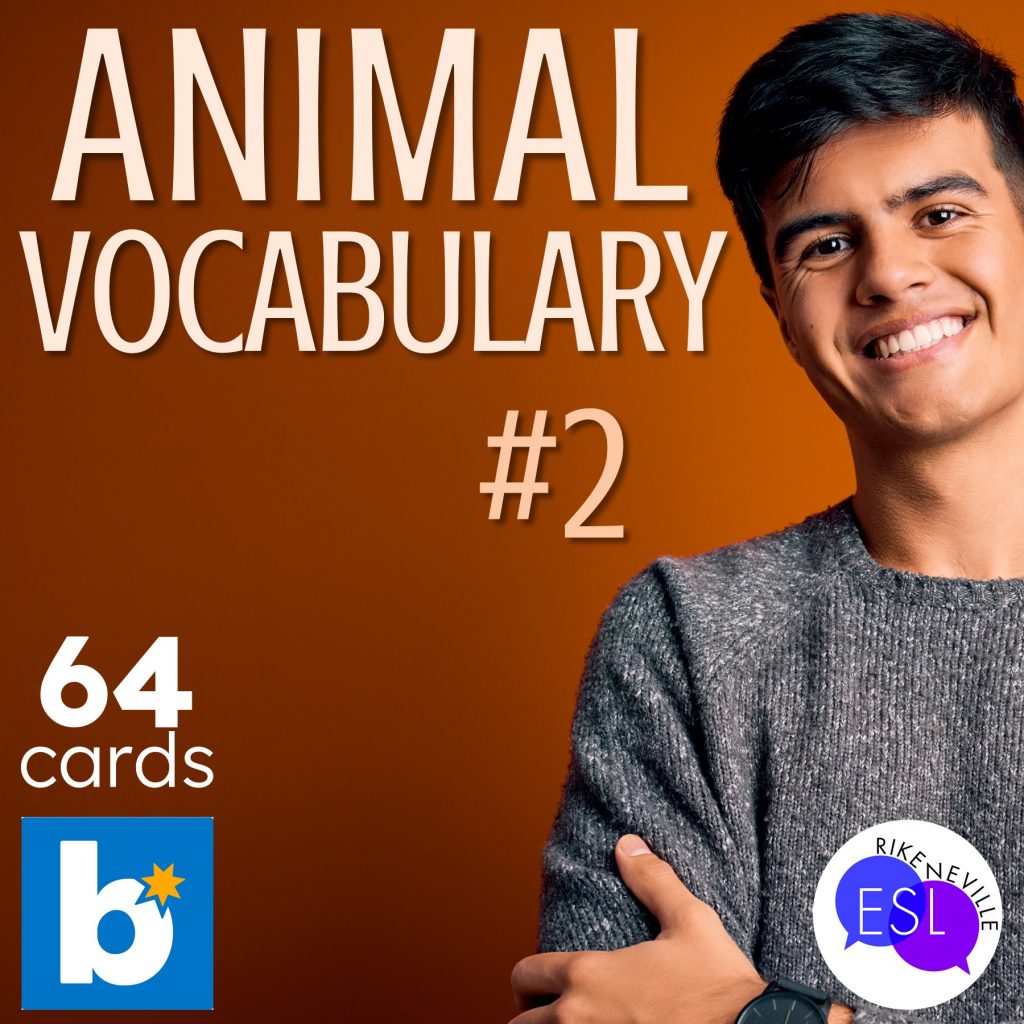
Animals is a common, broad vocabulary theme that you are more likely to find in a children’s ESL book than an adult’s, and that’s a shame! Just think about all the ways you could teach such a theme and how easy it is to differentiate for differently leveled classes or different leveled students who happen to all be in the same vocabulary class.
A student once challenged me, saying that animal vocabulary was useless and that he’d rather not waste his time learning it. You can bet I found a way to use animal vocabulary in nearly every single lesson after that! By the end of the course, he included it in his own work. Success!
Six ideas for using animal vocabulary
1. Idioms are rich in animal vocabulary!
Adult ESL students are well aware that we season our speech quite heavily with idioms, so it’s rare to have a student not willing (and even eager) to learn a few idioms. I took full advantage of this when I had a mixed-level class about to start a unit on animals. I created a short PowerPoint for this. An image and term for each animal were on one side and a related idiom or fact on the other. This made it possible for my very low-beginners to learn right along with the more advanced students. Students just focused on whichever half of the screen that best matched their level.
2. Use animal vocabulary in pronunciation exercises.
Which sounds do your students struggle with? Use animal terms that include those sounds and conduct a mini-workshop to help them improve their pronunciation of those sounds.

Have Arabic speakers? This is the time to use that minimal pair, bear/pear. Any Korean students? Fish will cover two problem areas because the Korean language doesn’t have an /f/ sound, and words don’t end in /sh/, so they add a long e sound.
Your Spanish speakers likely sneak an extra vowel sound in front of snake, spider, and scorpion. Squirrel will twist almost any German tongue.
Counting out syllables, by the way, can help with some of those added vowel sounds, whether they are tacked onto the end or attached to the beginning.
3. Infuse a synonyms and antonyms lesson with animal facts and attributes.
Of course, because animals are such a popular theme for kids, adults tend to know something about quite a few animals, being former kids themselves. You can use all that prior knowledge to your advantage.
Teaching opposite adjectives? Show them two animals and have them brainstorm opposite pairs that could describe them. Or do opposite adverbs so they can describe how the animals do something. You can even purposely pick an animal pair that one group of students is more likely to know something about to give them a moment to shine.
4. Use animal vocabulary in a fact and opinion lesson or review.
Again, our adult ESL students generally come with a lot of prior knowledge of animals. Use this when you are teaching fact from opinion. Use animals that most (if not all) students will have knowledge of and use animals specific to regions your students came from. This gives them the chance to share with their classmates any posteriori knowledge they might have.

5. Introduce the compare/contrast reading strategy with animals. Compare and contrast animals’ appearances, abilities, etc.
You can give them a Venn diagram to fill out, show them an example of a text with compare/contrast organization, or even have them write a poem comparing and contrasting their best friend with an animal. This lets them stretch their animal vocabulary from the terms that name the animals to related adjectives and verbs.

6. Increase their verb vocabulary with descriptive words to show how animals move.
Did the cat walk, or did she saunter? Did she weave between people’s legs? Stalk? Twitch her tail? Pounce on the laser dot? Shred someone’s skin? Yowl? Hiss? Purr? Challenge your students to describe an animal using only verbs and then see if you (or their classmates) can guess the animal.
A themed vocabulary lesson is so much more than its theme.
As you can see, you can cover grammar, vocabulary, pronunciation, reading, writing, and speaking, all within the theme of animals. Best of all, this works with just about any theme in that textbook. Be open to coloring outside the lines when you develop your lessons, and you will likely keep all your students fully engaged and not complaining that any given theme is too childish or below their level.
Animal-Themed Resources Made for Adult Learners
Whether you are looking for a digital presentation for introducing the vocabulary, a low-prep printable game, or self-checking digital BOOM cards, you’ll love what I have made for you. Below you’ll find a few of the resources I have available.





Leave a Reply